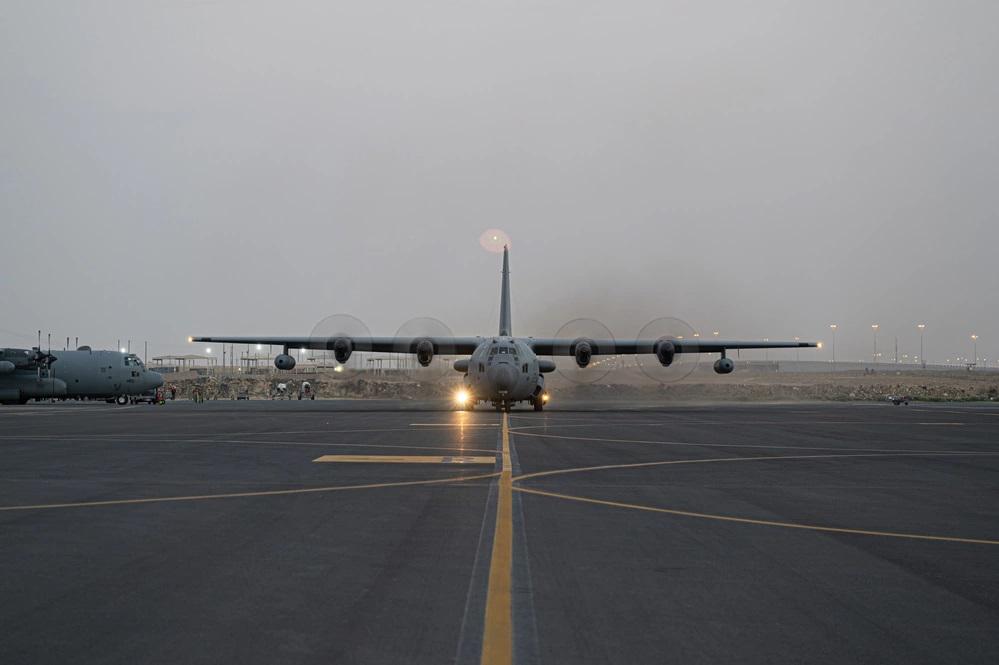Two U.S. Air Force EC-130H Compass Call aircraft arrived at Ali Al Salem Air Base, Kuwait to demonstrate a continued U.S. presence in the theater to partners and adversaries, and support a commitment to security and stability in the region. The EC-130 aircraft were redeployed to the United States where they postured as an immediate response force following the 41st Expeditionary Electronic Combat Squadron’s inactivation from Al Dhafra Air Base in Sept. 2021, after a 20-year-long standing deployment. At the time of its deactivation, the 41st EECS had executed 14,753 sorties totaling over 90,000 hours of flight time in the U.S. Central Command theater. The rapid deployment of the EC-130s into the USCENTCOM area of responsibility exhibits the U.S.’s ability to incorporate additional combat capability at any time, deterring regional aggressors through the electronic warfare prowess.
“We trained back home to be ready to go at a moment’s notice to any destination that they want us to. We were tasked, so we packed, left and came out here within a matter of days. We posture in a way that our training is all up to date and the mission sets that we practice are current. We also look forward to future mission sets, and how we could possibly be utilized as the world changes. We’re always at home preparing, there’s no pause. We’re always in that mindset that we could go tomorrow. All of the individuals that make this airplane go are vital – from our ground maintainers that help launch this aircraft off the ground every day, to the pilots and navigators that help get us to and from where we need to be, and our electronic warfare officers, who employ the mission system.,” said U.S. Air Force Maj. Ricardo Solano, 41st EECS commander.

The EC-130H Compass Call is an electronic attack aircraft flown by the United States Air Force. Based on the Lockheed Martin C-130 Hercules, the aircraft is heavily modified to disrupt enemy command and control communications, perform offensive counterinformation operations, and carry out other kinds of electronic attack. Planned upgrades will add the ability to attack early warning and acquisition radars. Based at Davis-Monthan AFB in Arizona, EC-130Hs can be deployed worldwide at short notice to support U.S. and allied tactical air, surface, and special operations forces. The EC-130H is one of the three main U.S. electronic warfare aircraft, along with the Boeing EA-18G Growler, and F-16CJ Fighting Falcon, all of which can suppress enemy air defenses while jamming communications, radar, and command-and-control targets.
The EC-130s use the electromagnetic spectrum in order to disrupt enemies’ command. The interruption of enemy communications impedes on their ability to come together and properly coordinate for attacks and control the situation. In a sense, they are flying blind. These non-kinetic effects save the lives of those who would otherwise be seen and targeted. With an onboard crew of 13, and countless ground support personnel, the crew’s job is to see, analyze and attack the electromagnetic spectrum, utilizing specialized equipment on the aircraft. While sophisticated, the mission system is continuously evolving to expand its capabilities to address the emerging communications systems of adversaries. While deployed here, the EC-130s will protect the American and coalition forces on the ground from enemy forces, whether they be insurgent, terrorist or enemy nations.
















